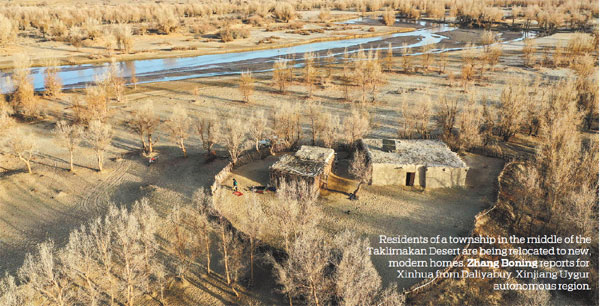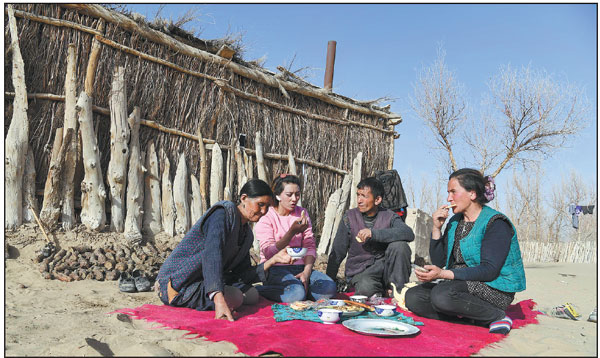Tide turns for families in the 'Sea of Death'
Residents of a township in the middle of the Taklimakan Desert are being relocated to new, modern homes. Zhang Boning reports for Xinhua from Daliyabuy, Xinjiang Uygur autonomous region.
Editor's note: This is the second in a series of stories focusing on the Xinjiang Uygur autonomous region, looking at the progress of its economy, cultural and business sectors, and poverty alleviation measures.
After visiting his son, who is studying in Yutian county, Xinjiang Uygur autonomous region, Imin Matkurban bought some vegetables before returning home.
Through forests of desert poplars and rose willows, the car carried Imin over countless sand dunes to his home in the middle of the Taklimakan Desert, China's largest arid zone.
It took about seven hours for the 39-year-old shepherd to get home, even though Yutian is no more than 300 kilometers from his home in Daliyabuy township.
Vegetables are difficult to find in the Taklimakan, aka the "Sea of Death", which was why Imin spent 50 yuan ($7.45) buying them in the county seat.
He and his family make a living by shepherding and planting Cistanche deserticola, or desert broomrape, a parasitic plant known in traditional Chinese medicine as the "ginseng of the desert".
Daliyabuy sits on the banks of the Kiliya River. Unsurprisingly, its name means "riverbank" in the Uygur language.
As early as 1896, the renowned Swedish geographer Sven Hedin journeyed to the end of the Kiliya River to conduct research on the people of the area. However, it wasn't until the 1950s that the settlement was officially named Daliyabuy by the government of Yutian.
The extremely poor transportation infrastructure means Daliyabuy's residents still lead traditional, slow-paced herding lives, largely unaware of how quickly things are changing in modern cities around the world.
To improve the residents' lives, the local government has launched a relocation program.
In August, it began moving the first 102 households to a site with government-provided houses and infrastructure, including schools and health clinics.
Matkurban's family will be among the last group of households to be relocated.
They are now living out their final months in the "Sea of Death" before they move to the new site, about 100 km from Yutian, in September.
As a village of great geographical, historical and archaeological value, Daliyabuy will become a tourist attraction, while Imin and all 216 impoverished households from Daliyabuy will embrace fresh, prosperous lives in their new homes.
|
An aerial view shows Imin Matkurban's house in a forest of desert poplars on the banks of the Kiliya River in Daliyabuy, Xinjiang Uygur autonomous region. Photos by Hu Huhu / Xinhua |
|
Imin (second from right) and his wife chat with neighbors. |
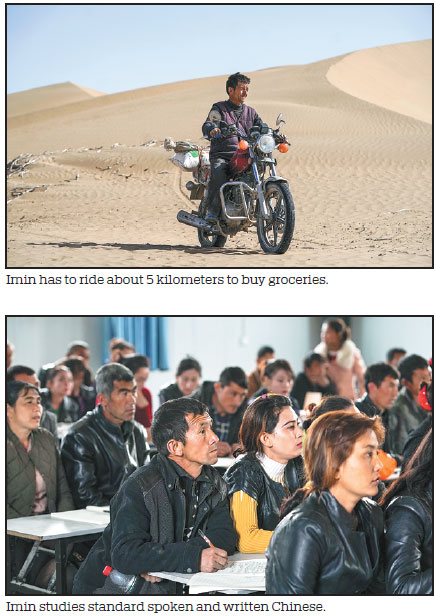
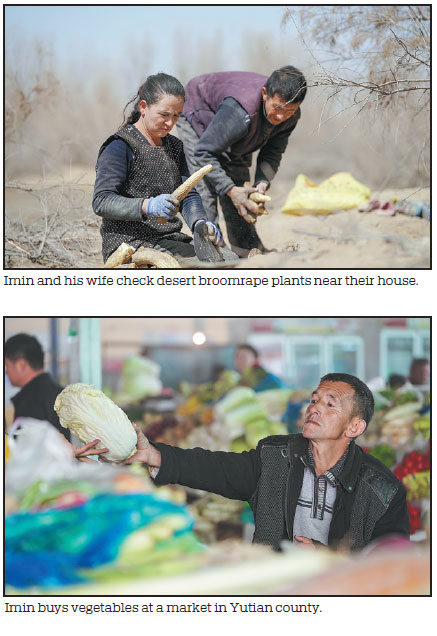
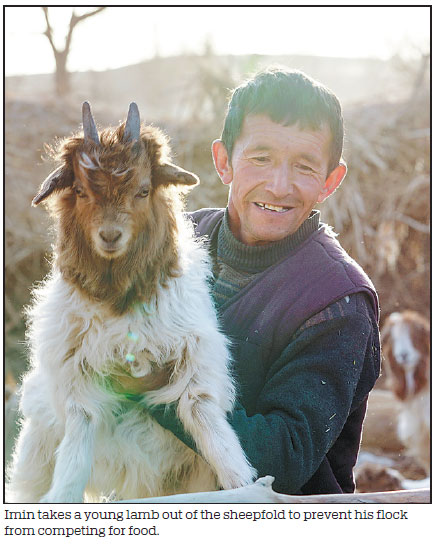
(China Daily 04/18/2019 page5)






